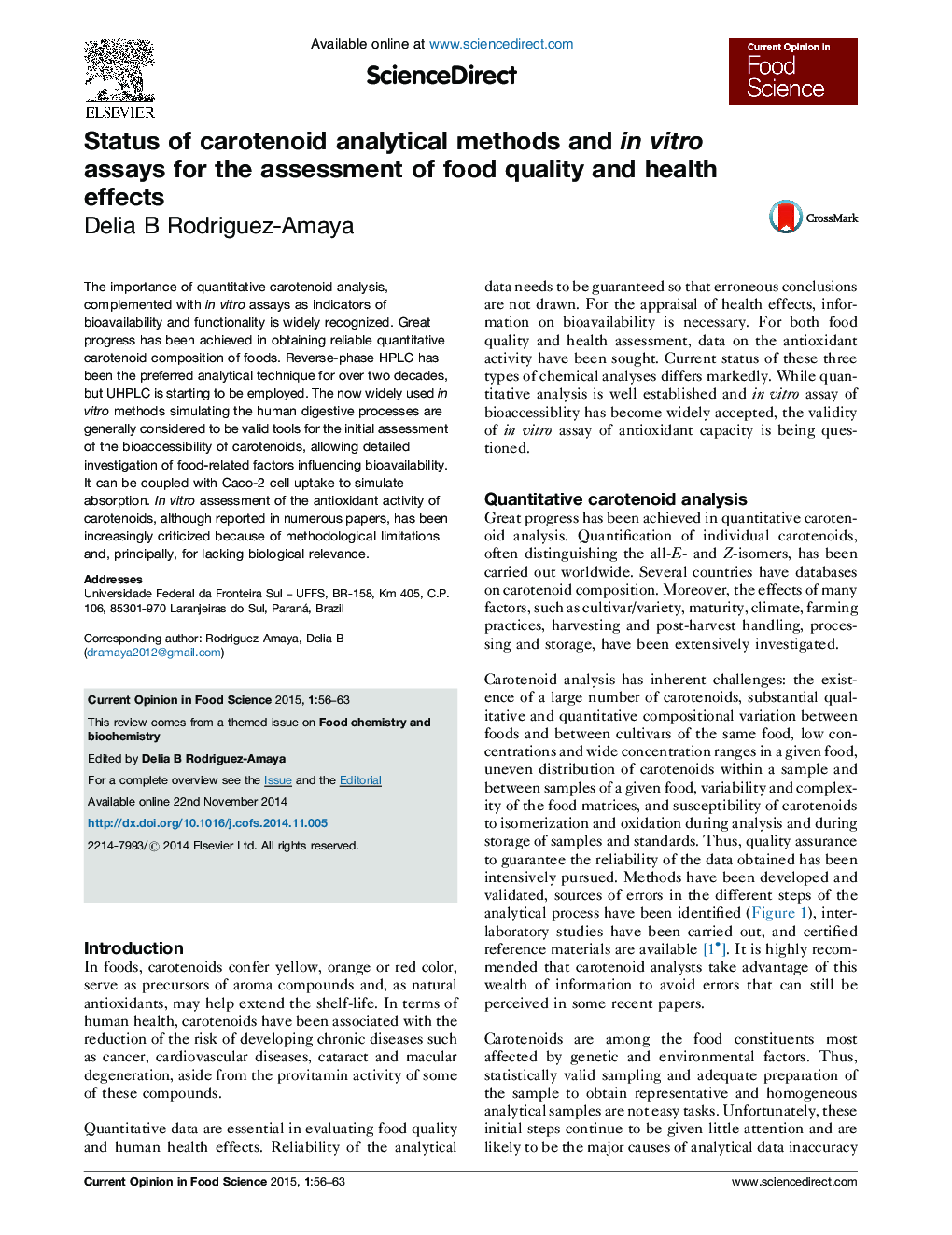| Article ID | Journal | Published Year | Pages | File Type |
|---|---|---|---|---|
| 2079798 | Current Opinion in Food Science | 2015 | 8 Pages |
•Accurate quantitative analysis of carotenoids has been carried out worldwide.•In vitro assay of bioaccessibility is a good tool for investigating food-related factors.•Commonly used in vitro assays of antioxidant activity is of questionable validity.
The importance of quantitative carotenoid analysis, complemented with in vitro assays as indicators of bioavailability and functionality is widely recognized. Great progress has been achieved in obtaining reliable quantitative carotenoid composition of foods. Reverse-phase HPLC has been the preferred analytical technique for over two decades, but UHPLC is starting to be employed. The now widely used in vitro methods simulating the human digestive processes are generally considered to be valid tools for the initial assessment of the bioaccessibility of carotenoids, allowing detailed investigation of food-related factors influencing bioavailability. It can be coupled with Caco-2 cell uptake to simulate absorption. In vitro assessment of the antioxidant activity of carotenoids, although reported in numerous papers, has been increasingly criticized because of methodological limitations and, principally, for lacking biological relevance.
